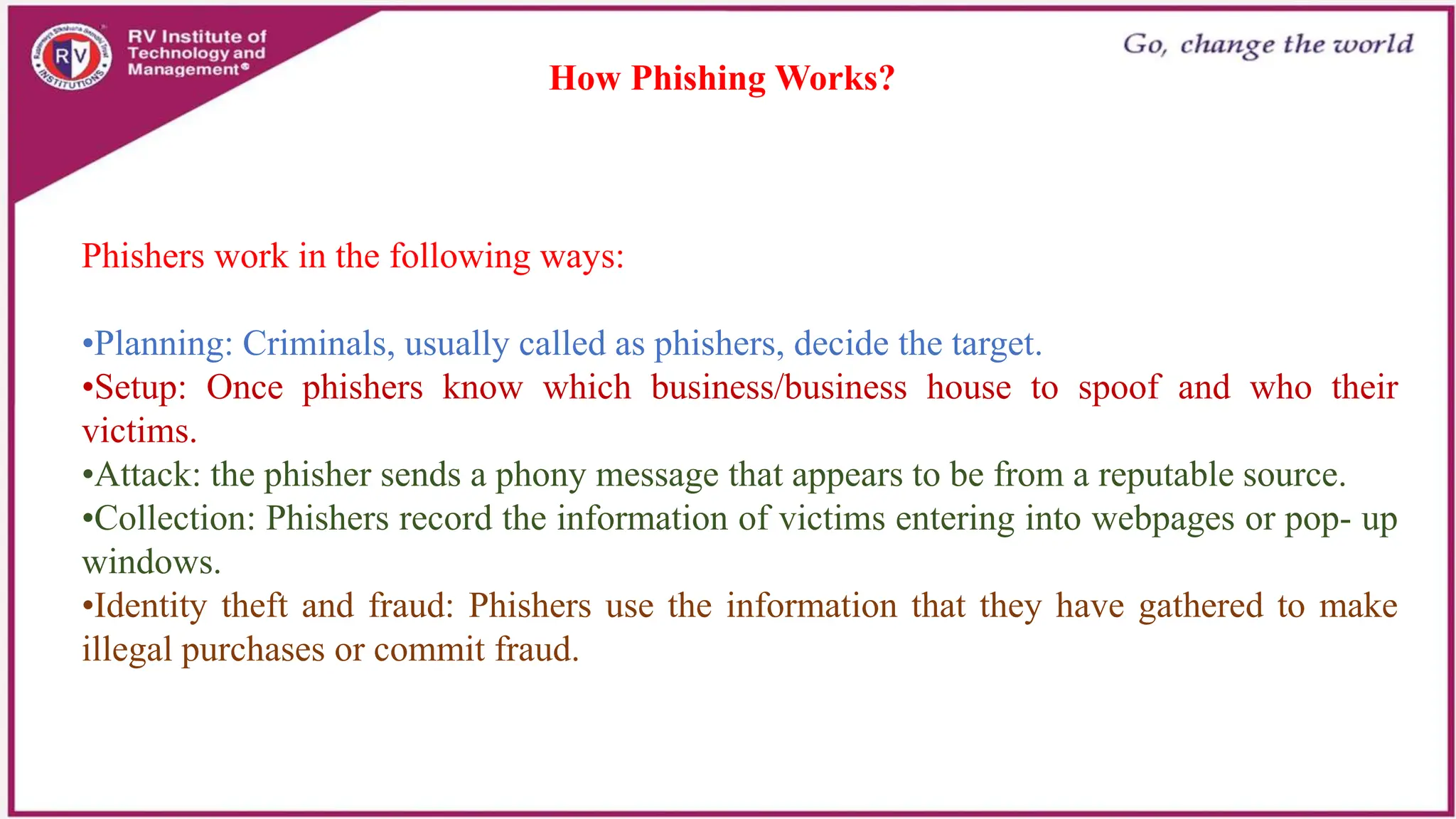The document outlines various tools and methods used in cybercrime, including phases of attacks like reconnaissance, network probing, and e-crime escalation. It also discusses techniques like phishing, password cracking, and the use of keyloggers and spyware, detailing their mechanisms and impacts. Additionally, it emphasizes the significance of strong passwords and the dangers posed by different types of malware, including viruses and trojans.















































